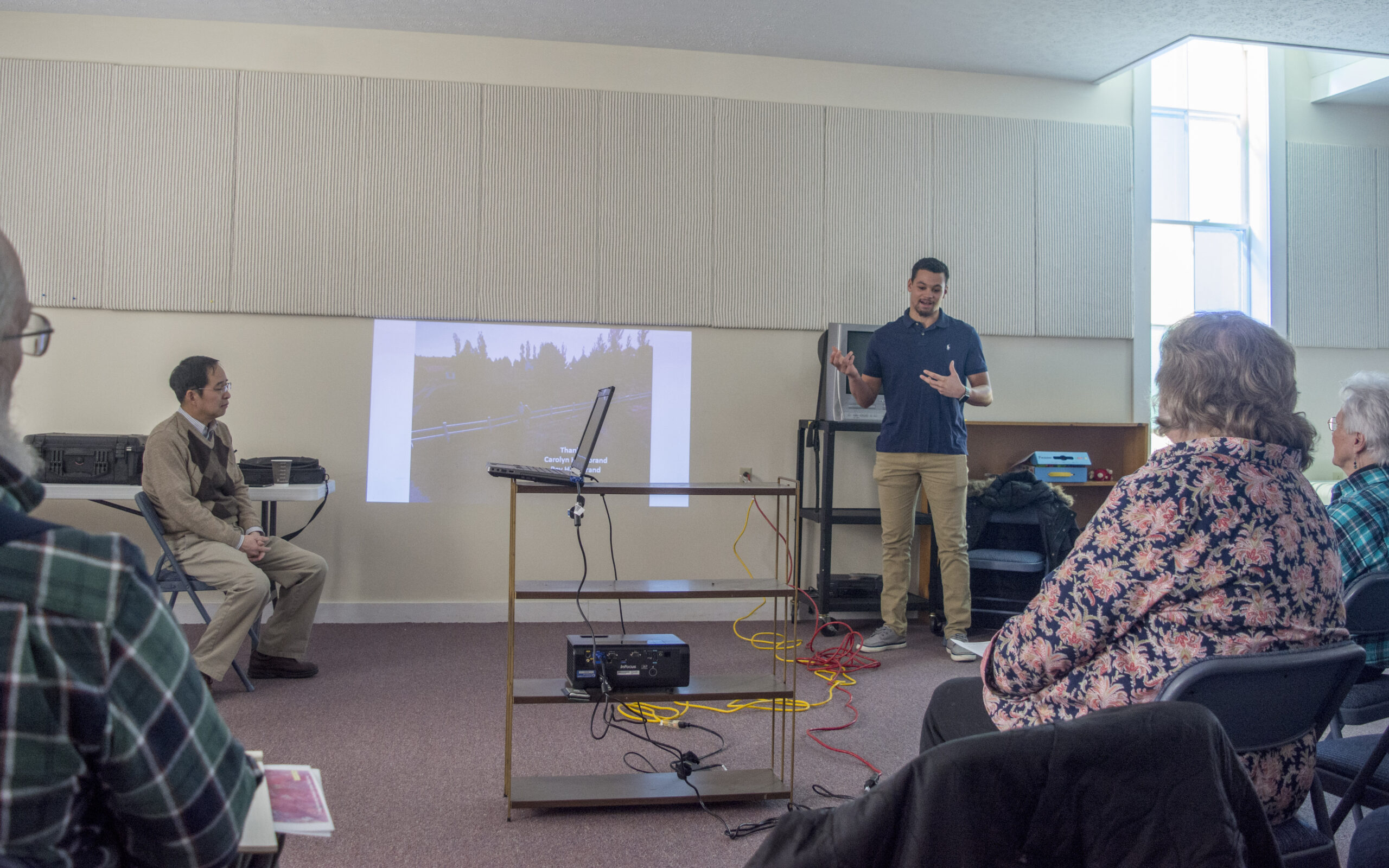
NEW SWEDEN, Maine — The University of Maine at Presque Isle recently discovered the graves of roughly 30 early settlers by using ground penetrating radar to survey the land behind New Sweden Historical Society Museum.
The settlers likely died around 1870.
The university’s Earth and Environmental Studies professor Dr. Chunzeng Wang led the survey with students Zackery Brooks and Matthew Payan. New Sweden Historical Society President Carolyn Hildebrand and her husband Ray Hildebrand assisted with field work and helped clear debris so the radar could make contact with the ground.
On Saturday, Wang and Payan explained the results of this project during a meeting at the New Sweden Covenant Church — specifically how the radar technology allowed them to analyze the area without disturbing the soil.
The professor said that once the brush was cleared, the ground penetrating radar could make contact with the ground and scan the earth beneath for any abnormalities — not unlike how an ultrasound would reveal a baby. The radar sends energy into the ground, which returns back to the device. Anything out of the ordinary would then be displayed on the screen as a hyperbola or disturbance in the normal patterns.
Wang and his students systematically scanned the area in two-foot intervals and after a total of 110 scans, discovered 30 possible burial sites. These locations were then flagged and an aerial photo was taken with a drone, with each possible spot marked.
The professor reiterated that while there is very strong evidence that the remains of early settlers are below the ground in these locations. It is important in science to emphasize that this is not a 100 percent certainty.
A couple residents asked Wang if it would be possible to locate remains that were buried without a casket or box.
Wang said that if bodies alone are buried very deep in the ground, the radar would have a difficult time detecting the remains.
“We see disturbances in the ground,” Wang said. “Why would people go in there and dig and then go away? There’s a disturbance there, just in that area, so with all the evidence, we can say that it’s probably a grave. You would have a hard time [finding remains without a casket], but if you scan very closely and look at all the evidence, you could possibly tell if someone was there.”
With knowledge of these burial sites, the New Sweden Historical Society now knows where some of the town’s earliest settlers were buried. These findings also ensure that the sites will not be disturbed in the future.




